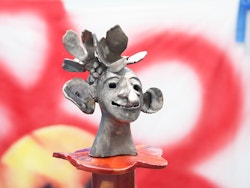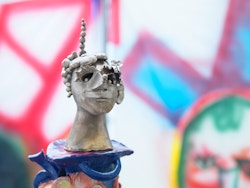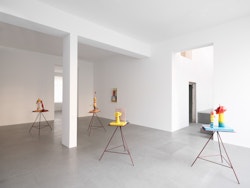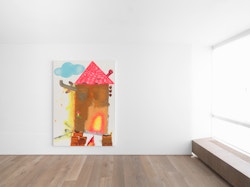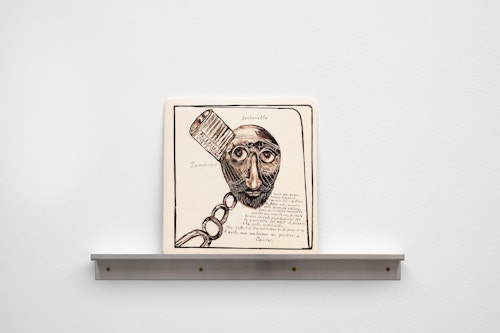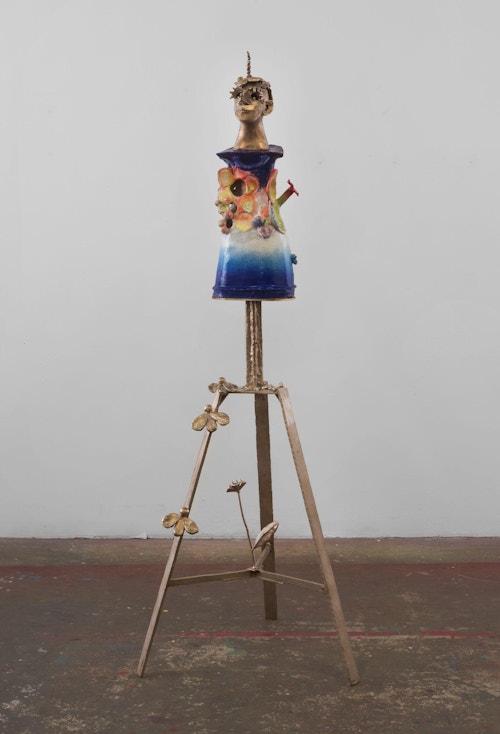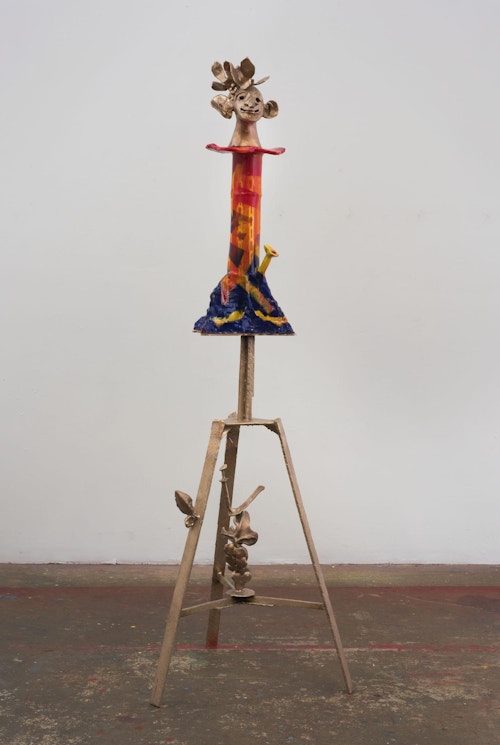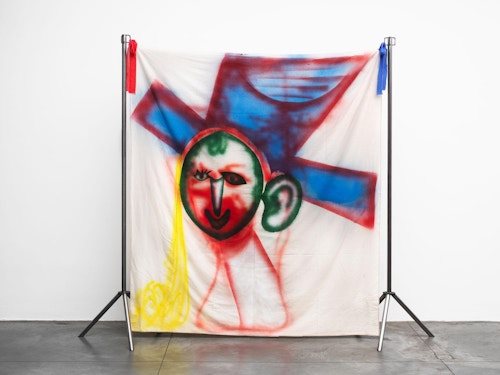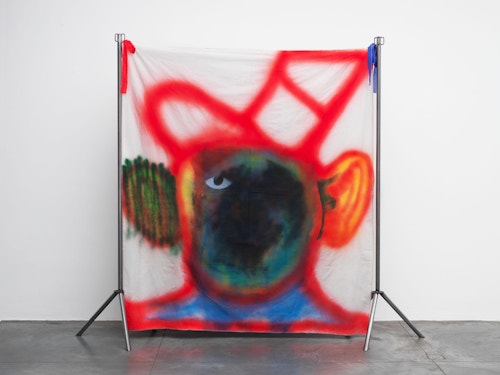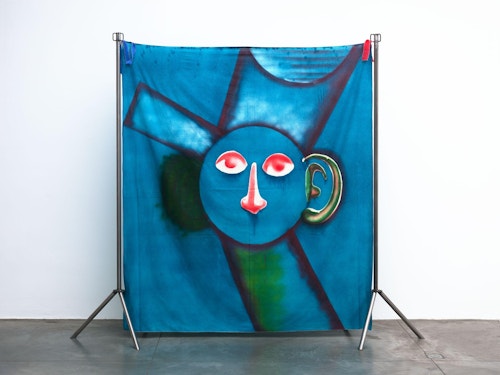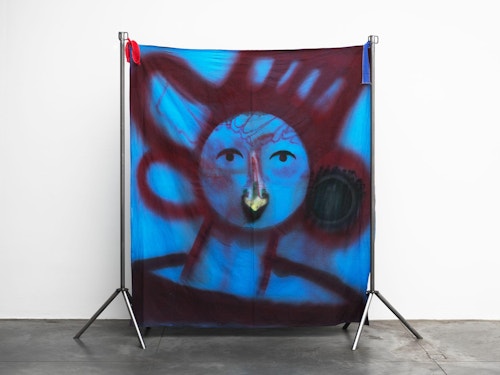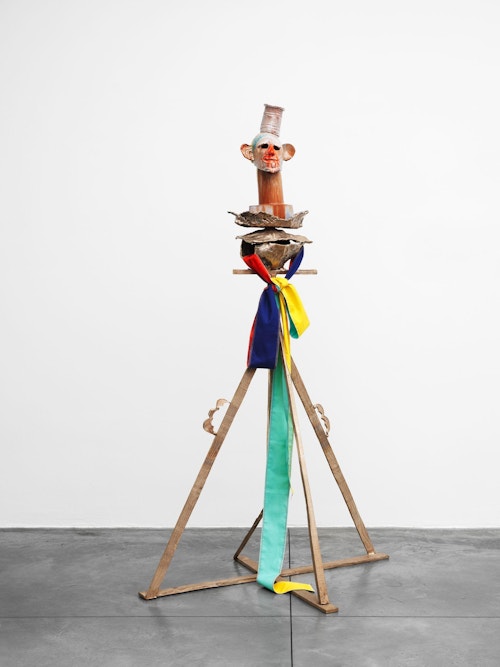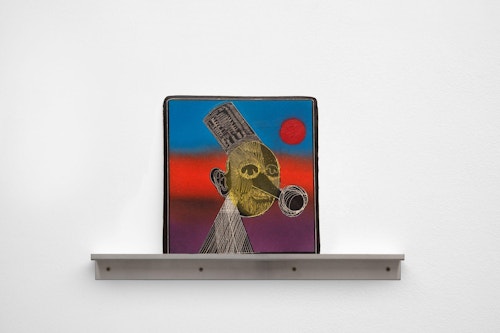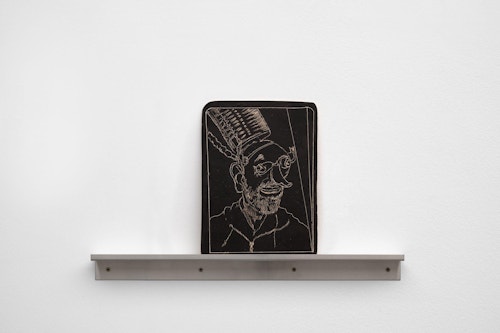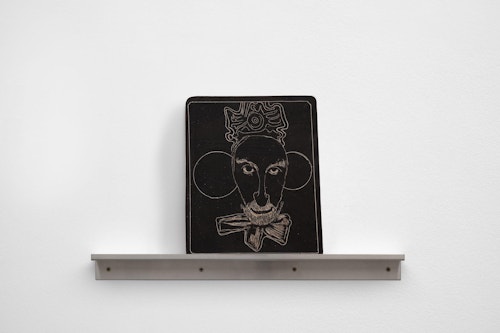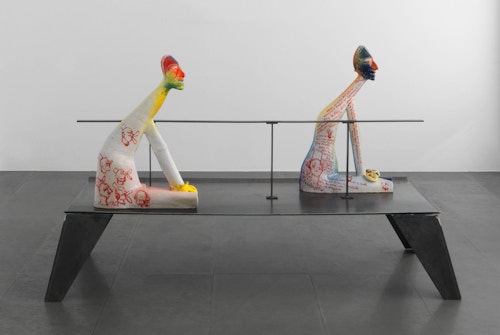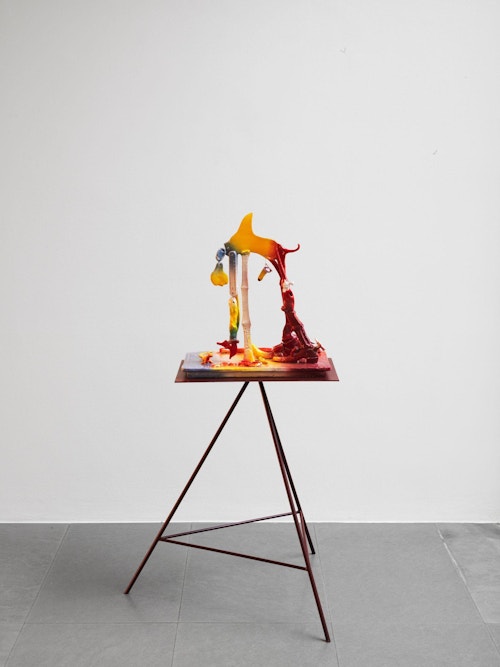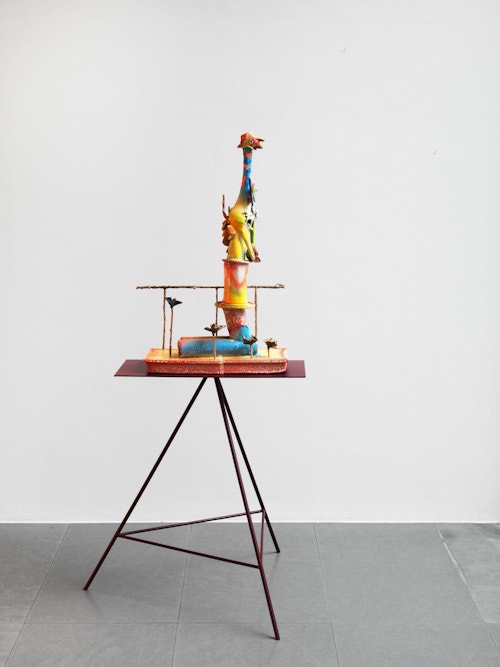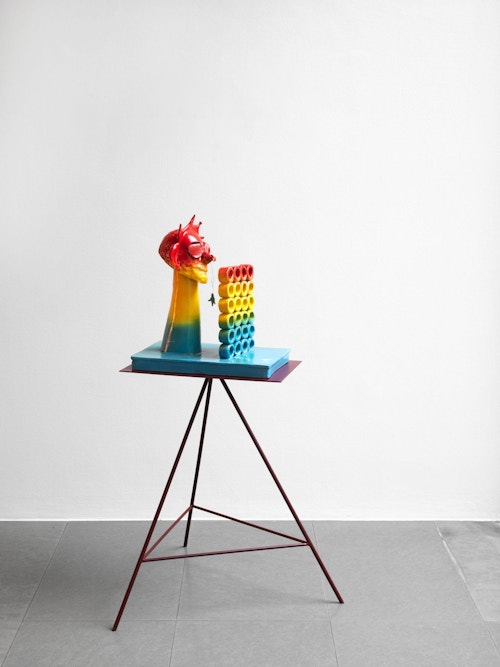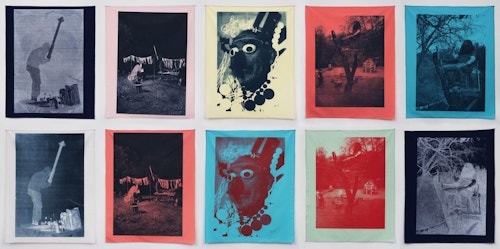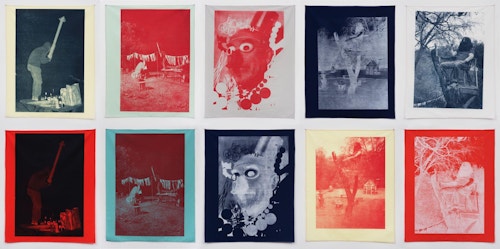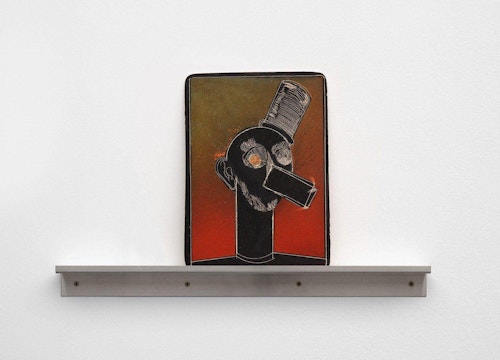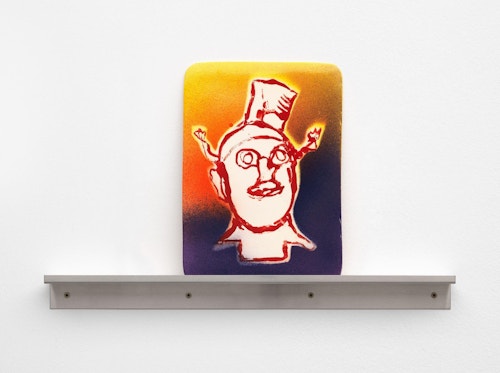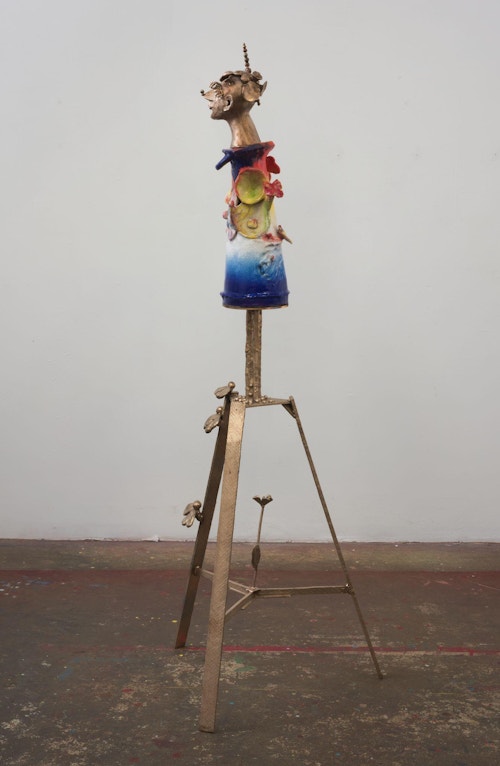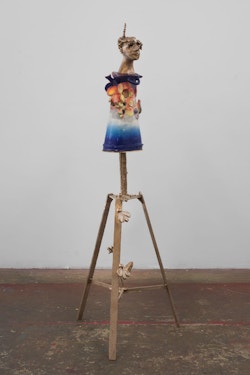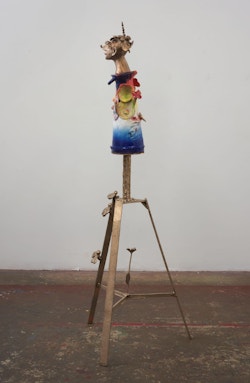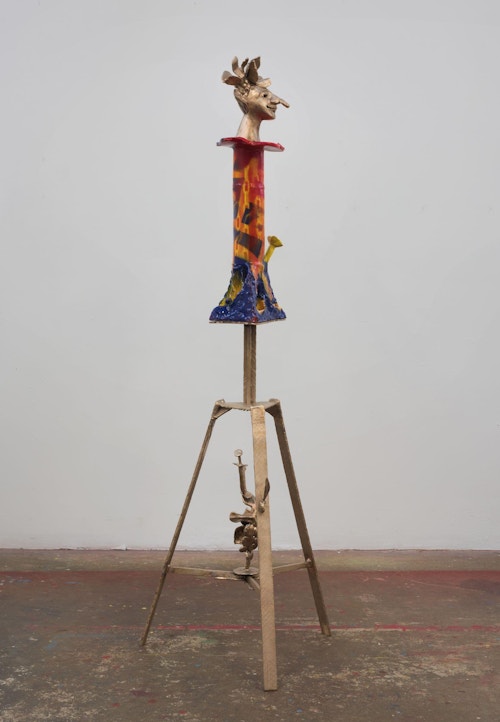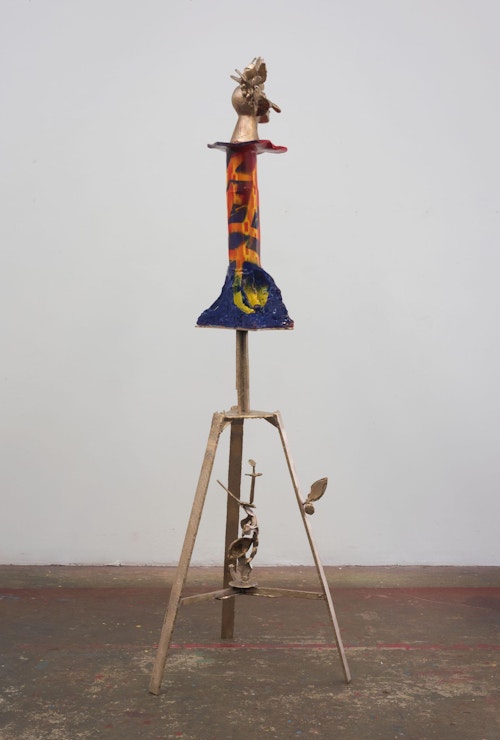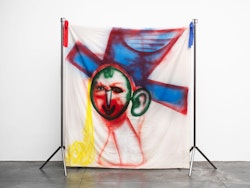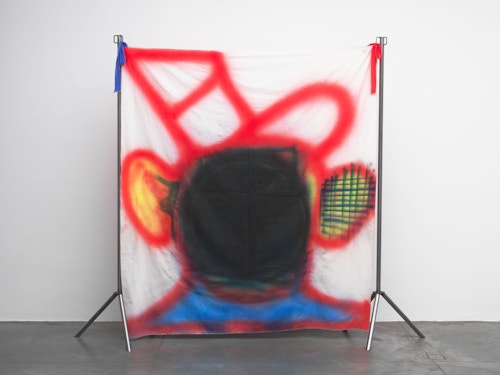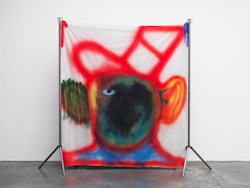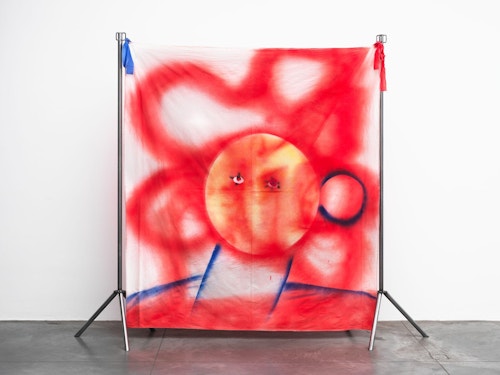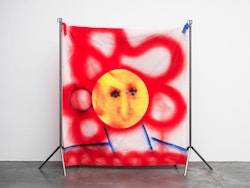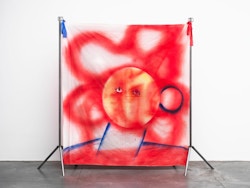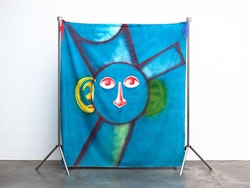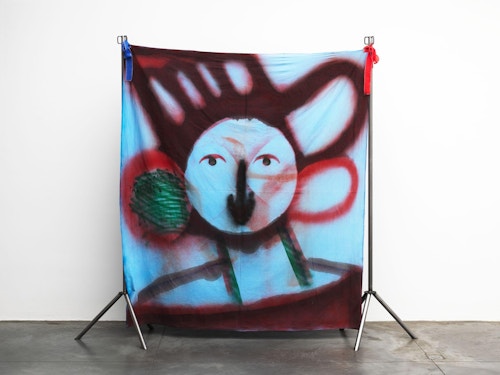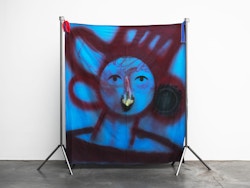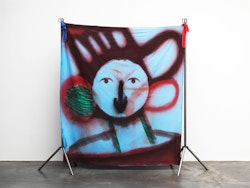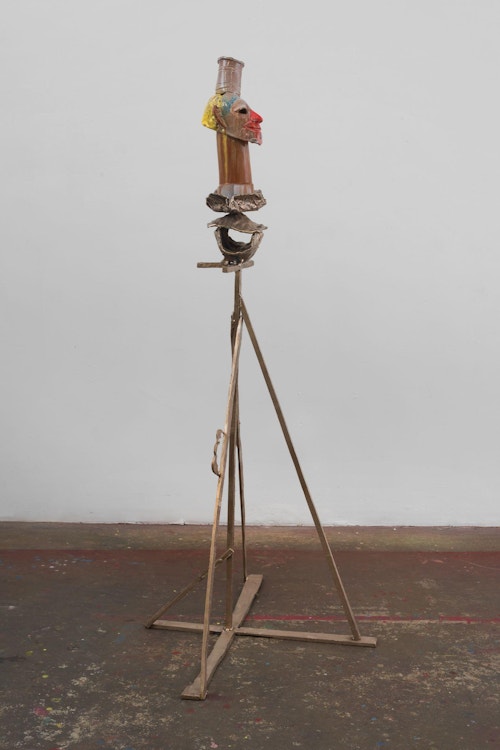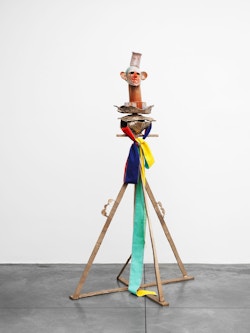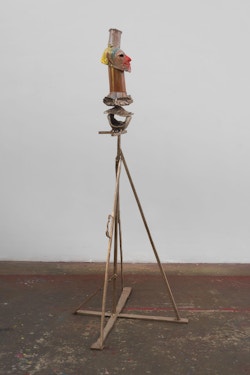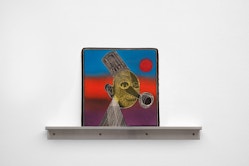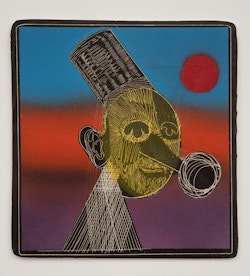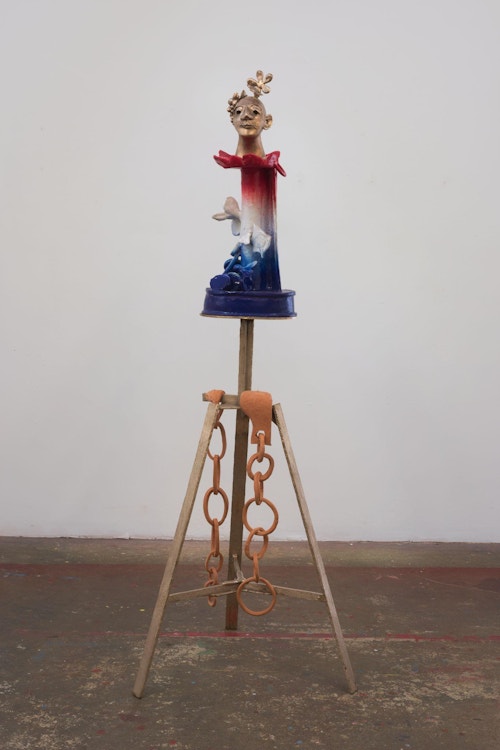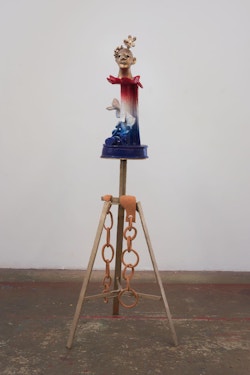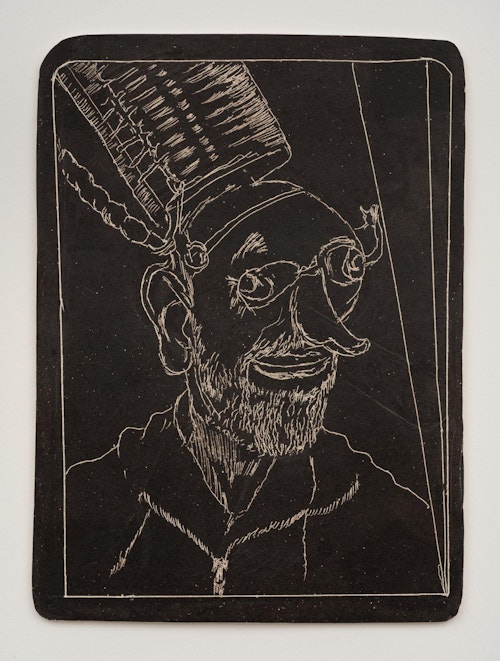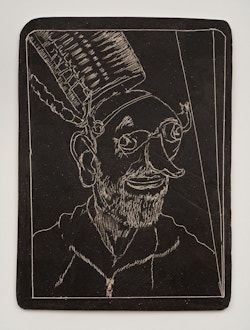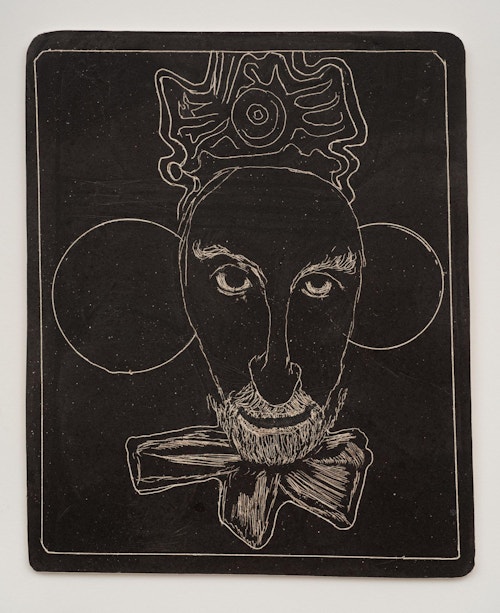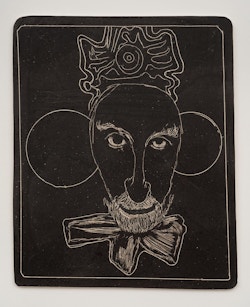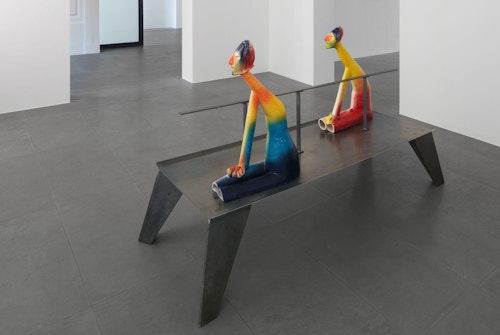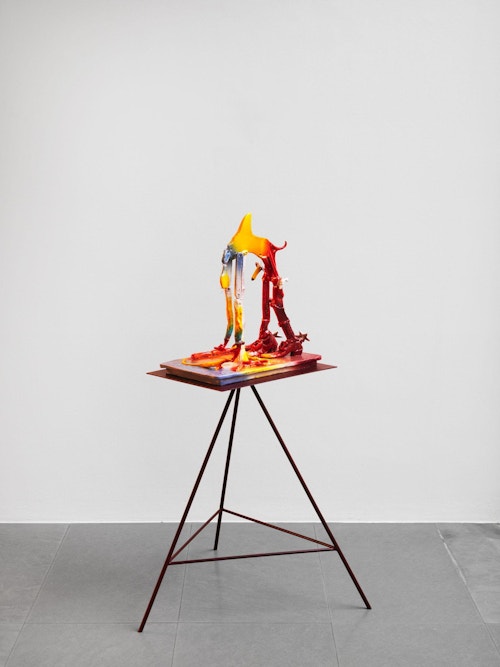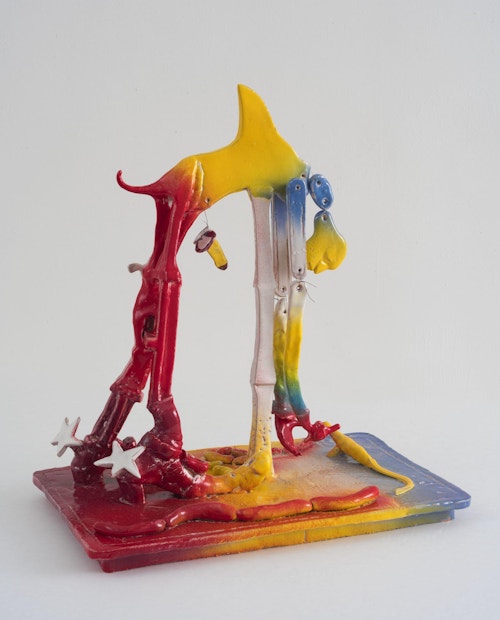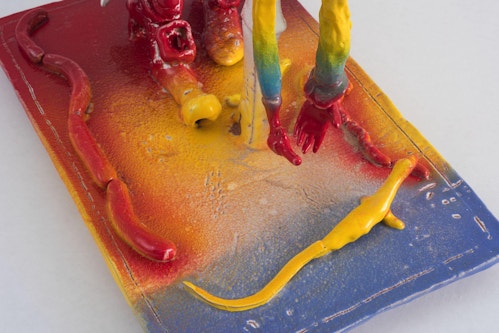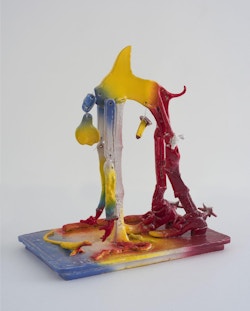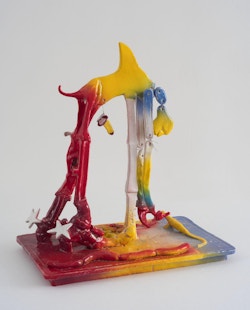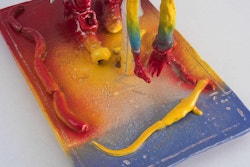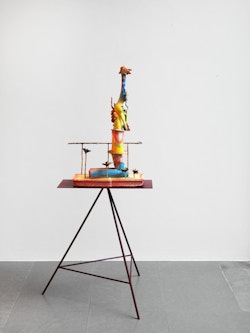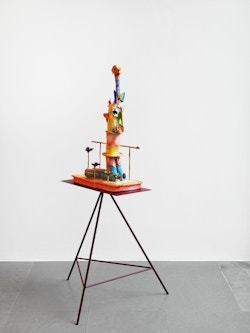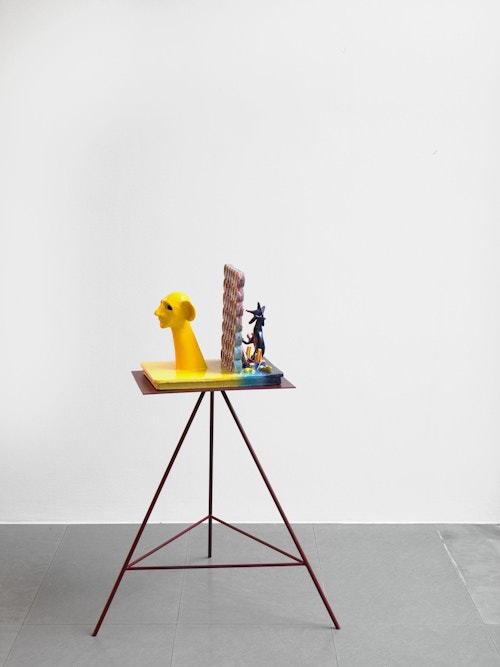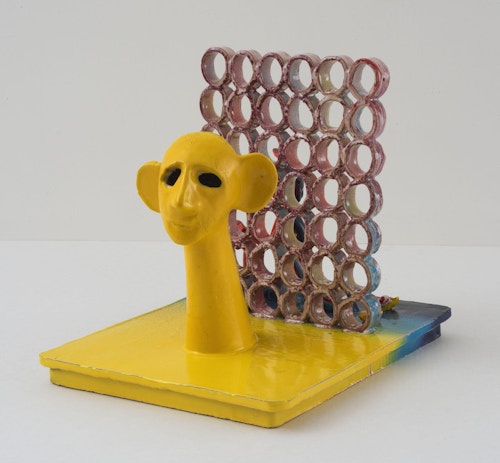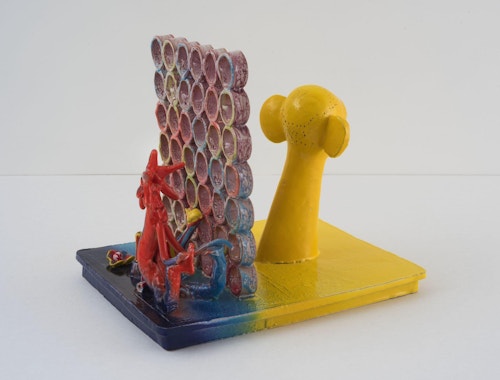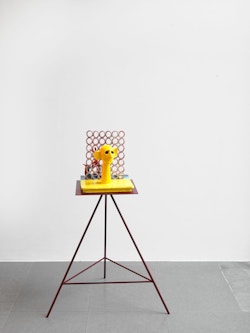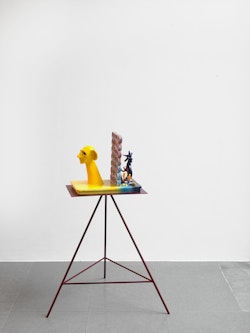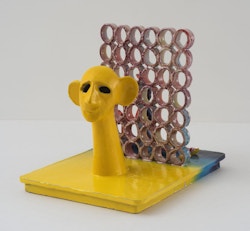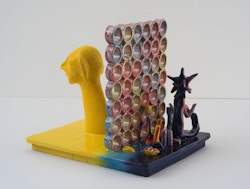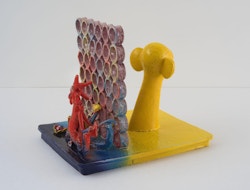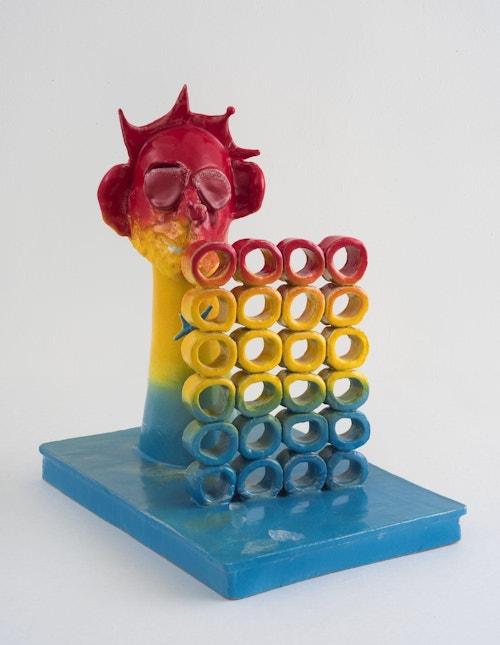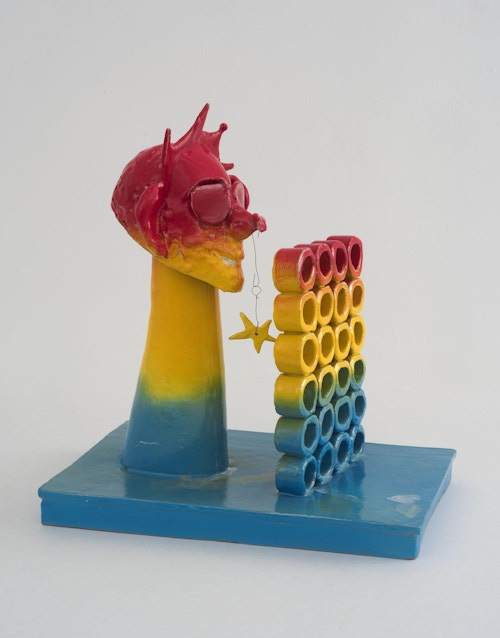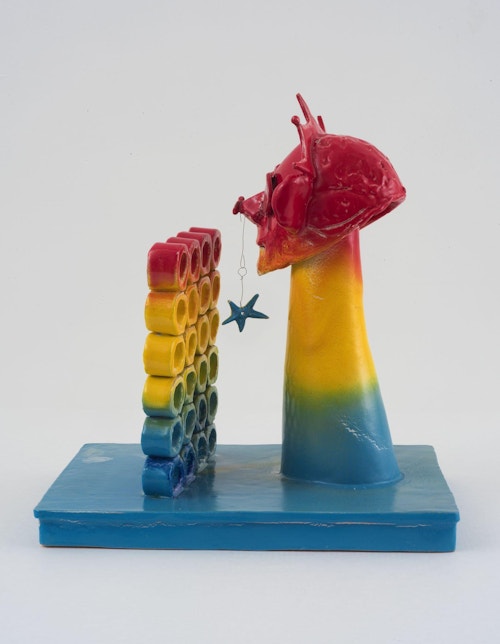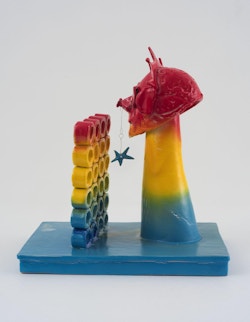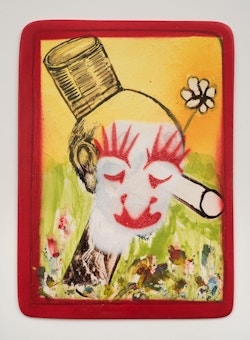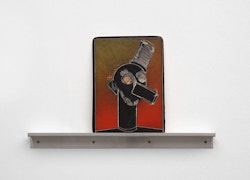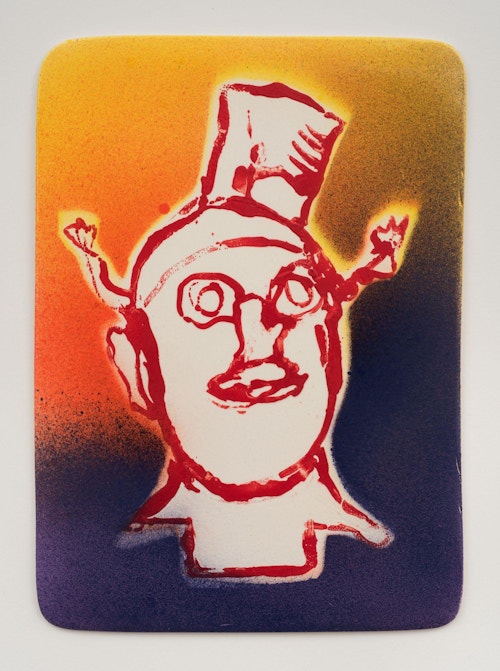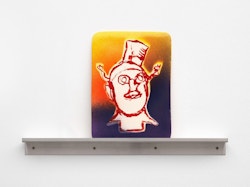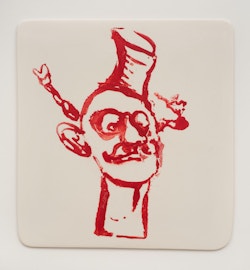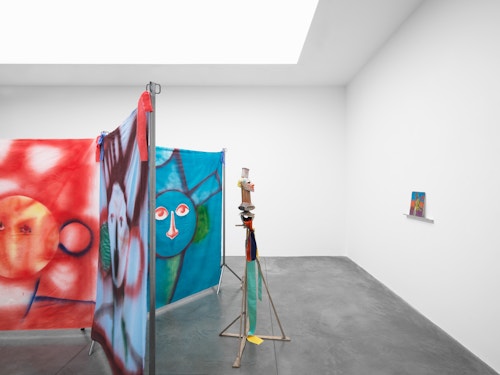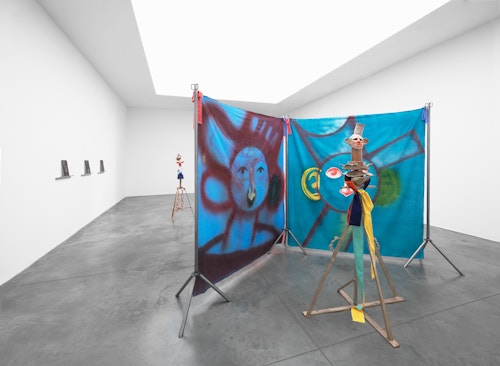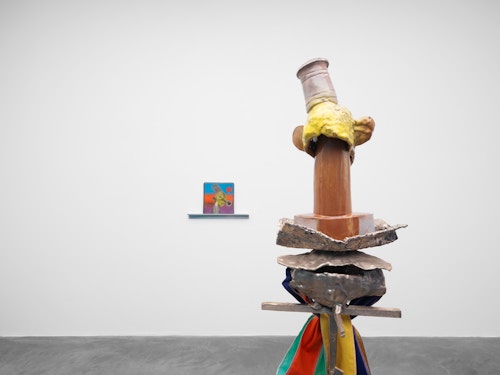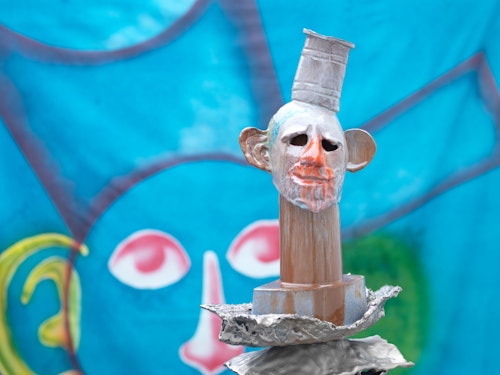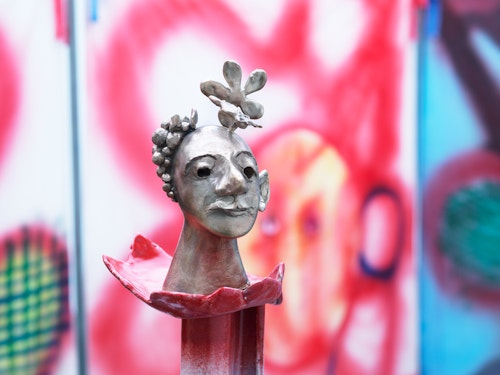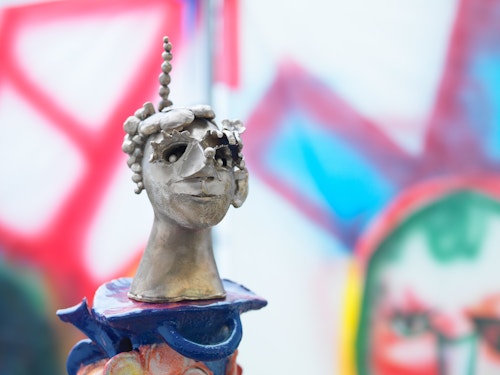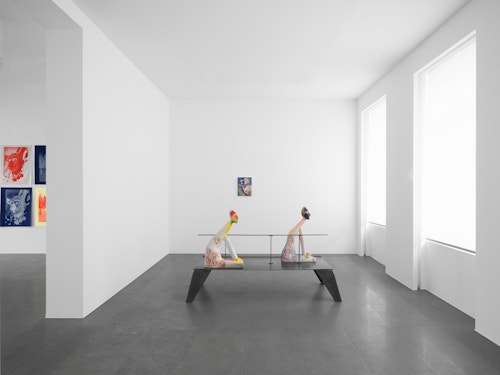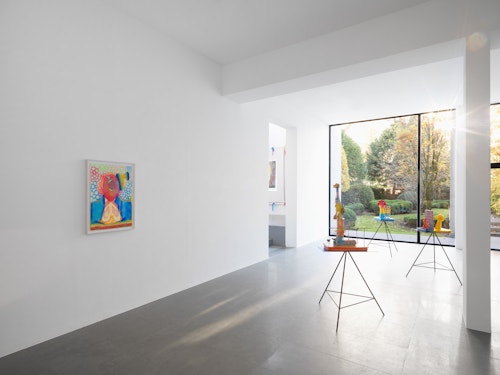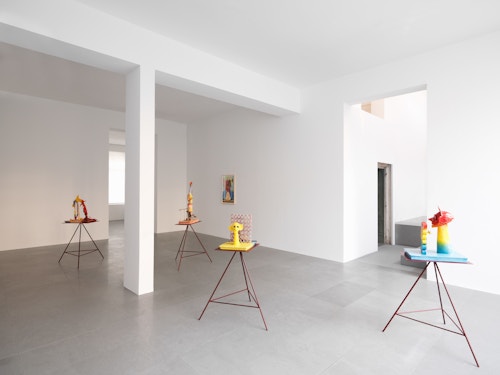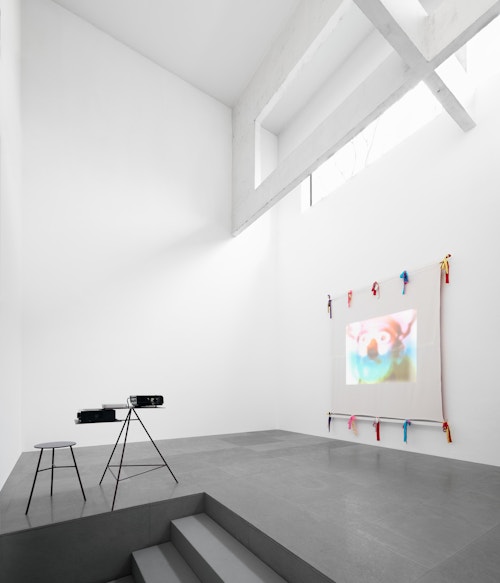
Alessandro Pessoli TESTA MATTA
Xavier Hufkens is pleased to announce the exhibition of a new series of works by Alessandro Pessoli.
Painter, sculptor, filmmaker, draughtsman and printmaker: Pessoli is a true polymath, an artist in love with materials and every conceivable form of expression. Comprising painted ceramics and bronze sculptures, works on paper, ceramic tiles, painting and film, the myriad forms and mediums in Testa Matta not only bear witness to the artist’s fertile imagination, but also to the truly interdisciplinary nature of his practice.

Testa Matta – which means ‘madcap’ or ‘screwball’ – is Pessoli’s second solo show with the gallery. Central to the exhibition is Fortunello, an imaginary Dadaist character created by the Italian actor and playwright Ettore Petrolini (1884-1936). Based on a cartoon character, and hinging on slapstick, parody and nonsense, Petrolini’s semi-mechanical performances as Fortunello captured the attention of the Italian Futurists. Marinetti described the character as ‘the most difficult to analyse of all Petrolini’s masterpieces’. Deeply engaged with both history and art history, Pessoli uses Fortunello as the springboard for a poetic, personal and richly layered visual essay on the themes of culture, identity and about what it means to be an artist.
Fortunello is brought to life – quite literally – in a stop-motion film entitled Autorittrato Petrolini. The work is based on a short film of Petrolini performing as Fortunello in 1915. To create the work, Pessoli projected the original clip onto a canvas: as the film rolled, he started painting. Drawing upon a wide range of media and tools – oils, acrylics, tempera, airbrushes, stencils, pastels, pencils, rollers, spatulas and rags – he painted the 1,000 frames of Autorittrato Petrolini on a total of seven canvases. Each frame of his film corresponds to a change in the painting, which the artist then photographed. There is no other post-production: the animation is simply the result of editing the photos in sequential order.
Fortunello’s song is almost untranslatable: it is a nonsense rhyme. The actor attempts to describe his own personality in words that slip into repetitive, contradictory phrases. The character of Fortunello is almost a hundred years old but, for Pessoli, he embodies several fundamental truths: not just about Italy and art, but about himself. In this sense, the work can be regarded as a self-portrait, a meditation upon the Italian character, or as a statement of identity. Yet Autorittrato Petrolini also touches upon more universal themes. This ‘moving painting’ spans the history of twentieth-century Italian art and includes references to Futurism, Surrealism, metaphysical art (pittura metafisica), Novecento Italiano and European pop art. It can thus also be interpreted as reflection upon Italy’s history, particularly during the Fascist era, as well as the emergence of modernism and its legacy. A related film, I Salamini, is based on a Petrolini song of the same title (1918) and shows the artist dressed as Fortunello.
Testa Matta also includes a recent series of amorphous figures and busts, some rendered in bronze, others in painted ceramic. The largest and most complex of these comprises four busts separated by thin, spray-painted canvases hung from iron tripods. Pessoli’s installation can be read as a loose interpretation of a classic portrait gallery in both two- and three-dimensions and is as much a paean to free-expression as it is to Petrolini/Fortunello, or the different images and modes of representation that are embedded in Western visual culture. What appears, at first glance, to be a collection of incompletely rendered portraits and rough-hewn plinths is, in fact, a sophisticated exercise in composition and juxtaposition. The dynamic contrasts between the heavy, malleable clay and the nebulous airbrushing, the surface textures, colours, materials and techniques radiate with vital energy. Pessoli’s characters are arranged as though engaged in a conversation, albeit one that takes place in separate ‘rooms’: whichever way you approach the installation, it can never be viewed in its entirety; there is always the awareness of the figures on the ‘other side’.
In addition to a recent film and a suite of drawings, Pessoli will also be exhibiting two new series of prints: unique silkscreens on fabric and a collection of monoprints.
Alessandro Pessoli (b. 1963, Cervia, Italy) studied at the Academy of Fine Arts in Bologna, and currently lives and works in Los Angeles, California. He has had solo exhibitions at the San Francisco Museum of Modern Art, San Francisco, CA (2012); Collezione Maramotti, Reggio Emilia (2011); MACRO Museo d’Arte Contemporane di Roma (2009); The Chisenhale, London (2005) and The Drawing Center, New York (1997). His work has also been included in exhibitions throughout Europe and the United States, including Making Worlds, the Italian Pavilion at the 53rd Biennale di Venezia (2009).

